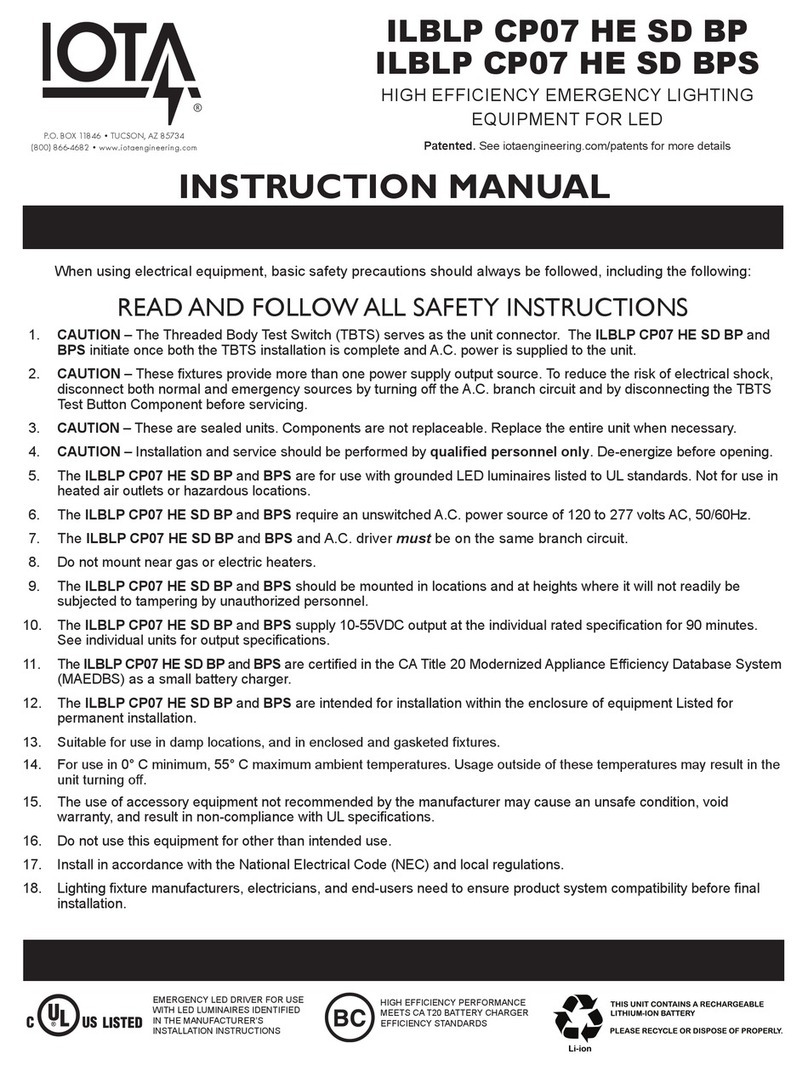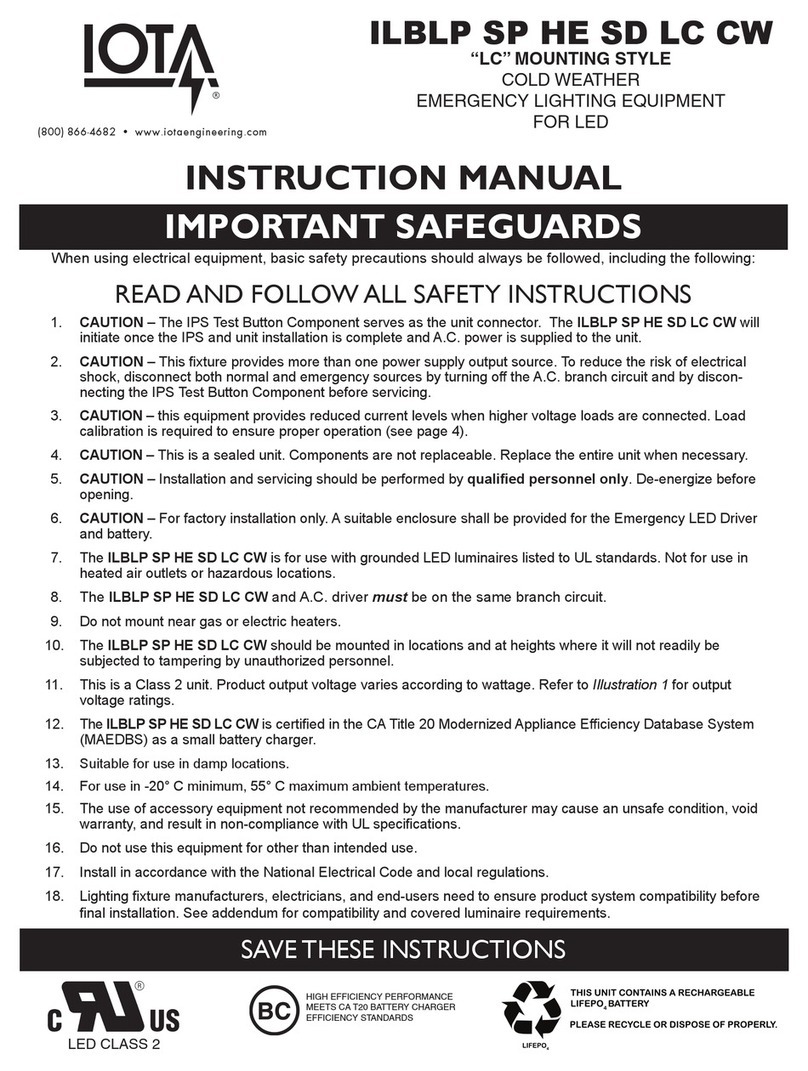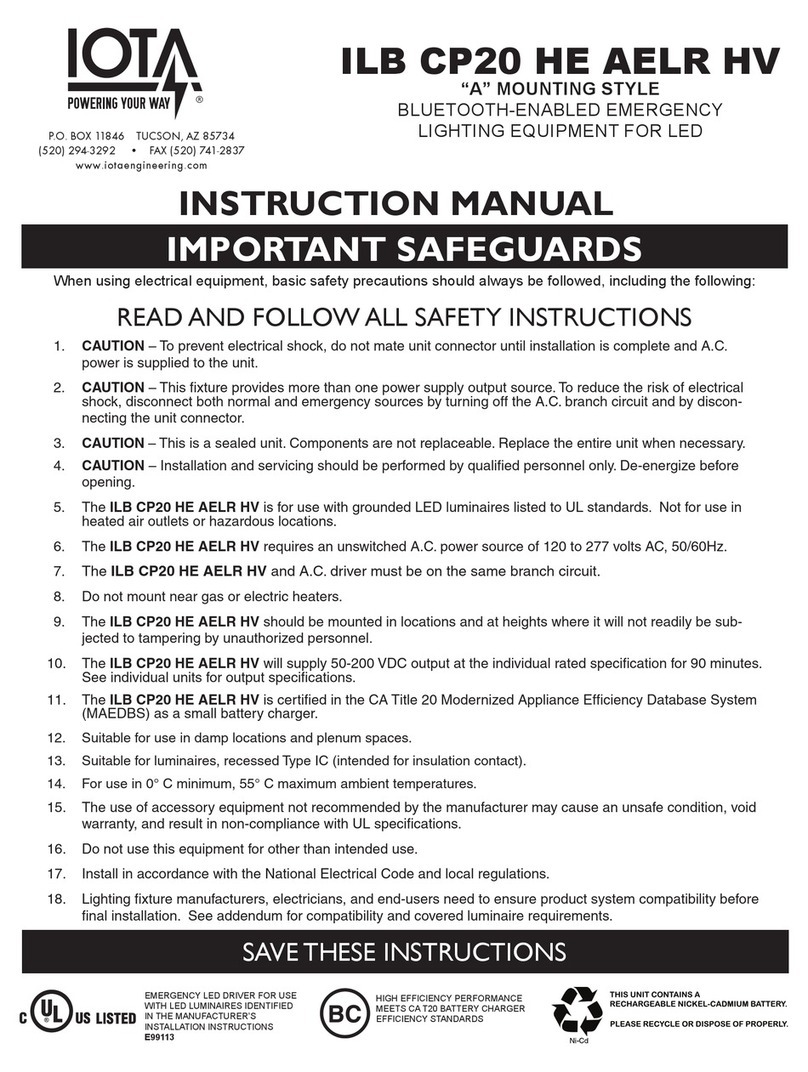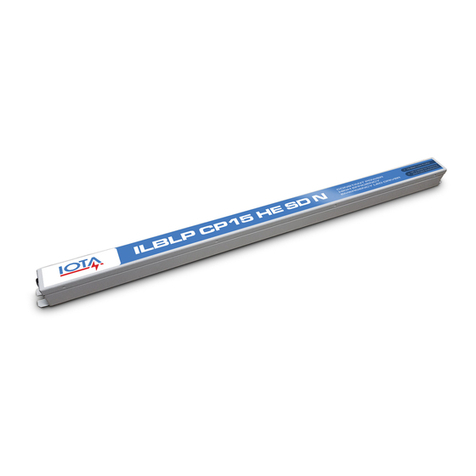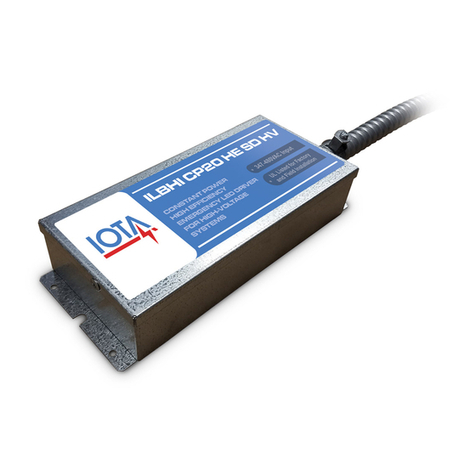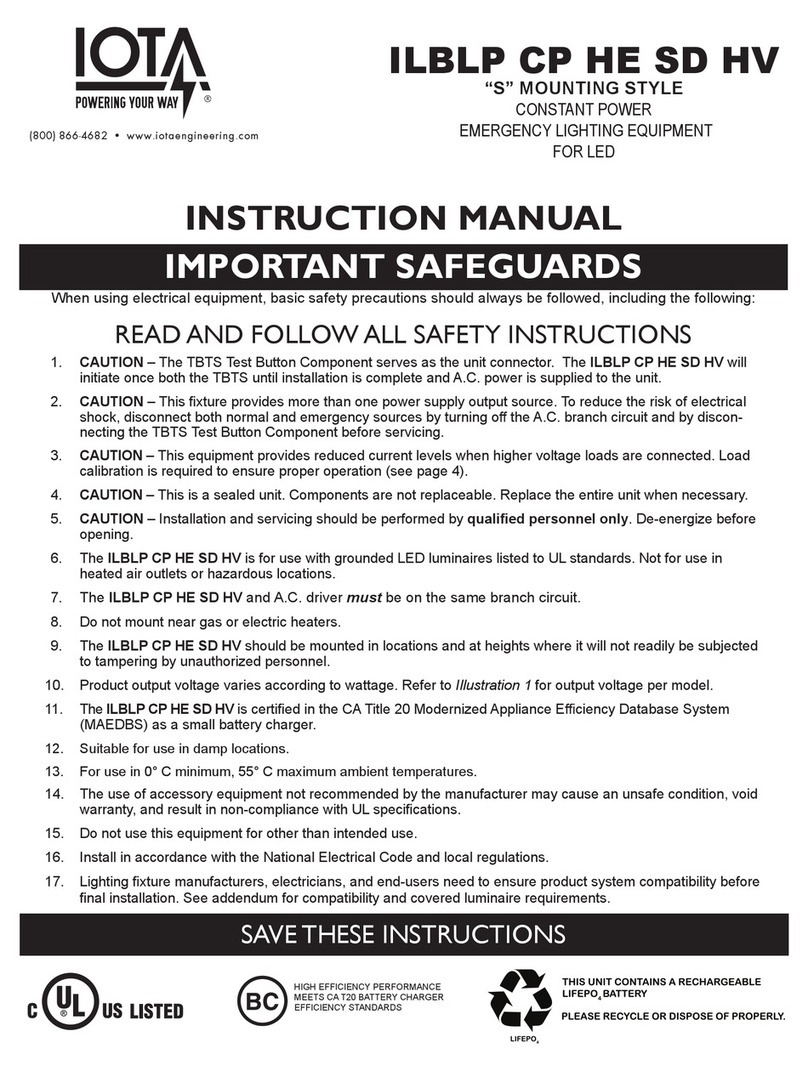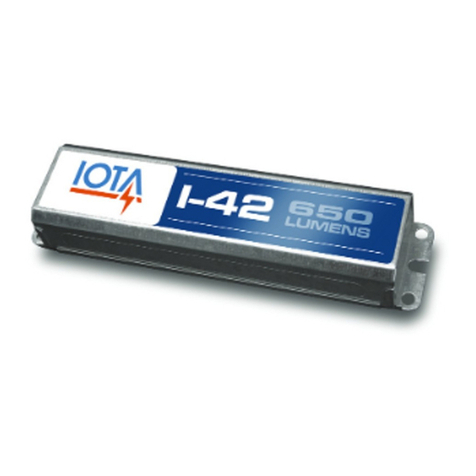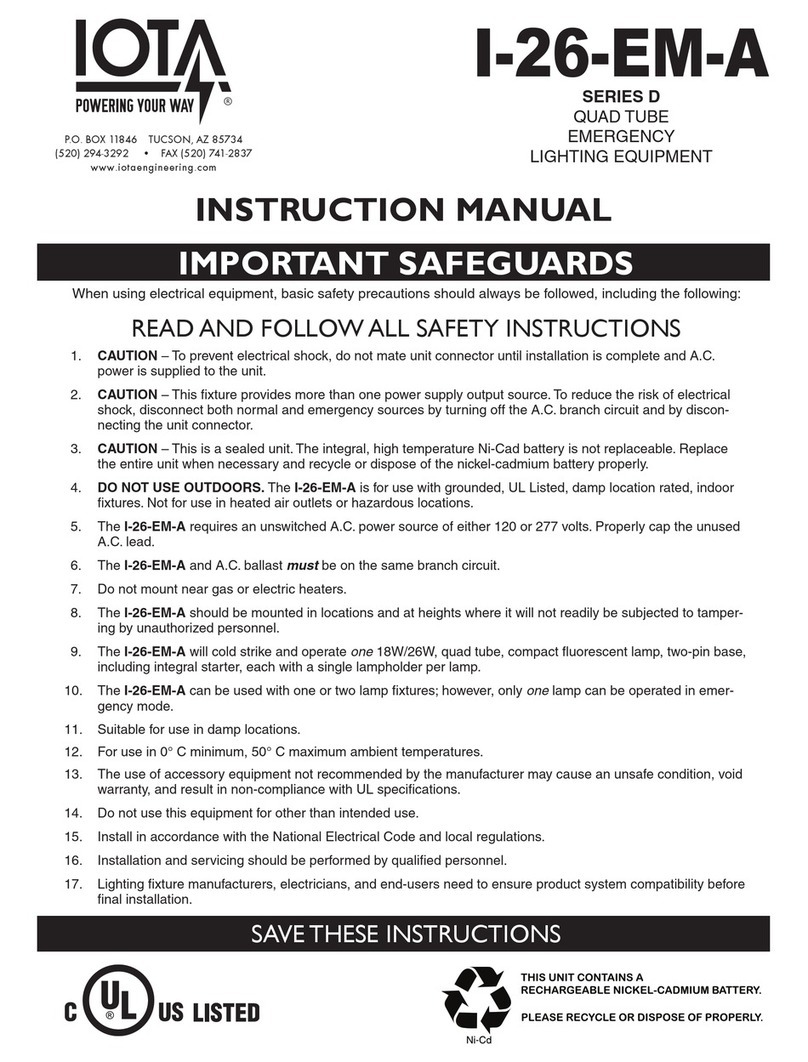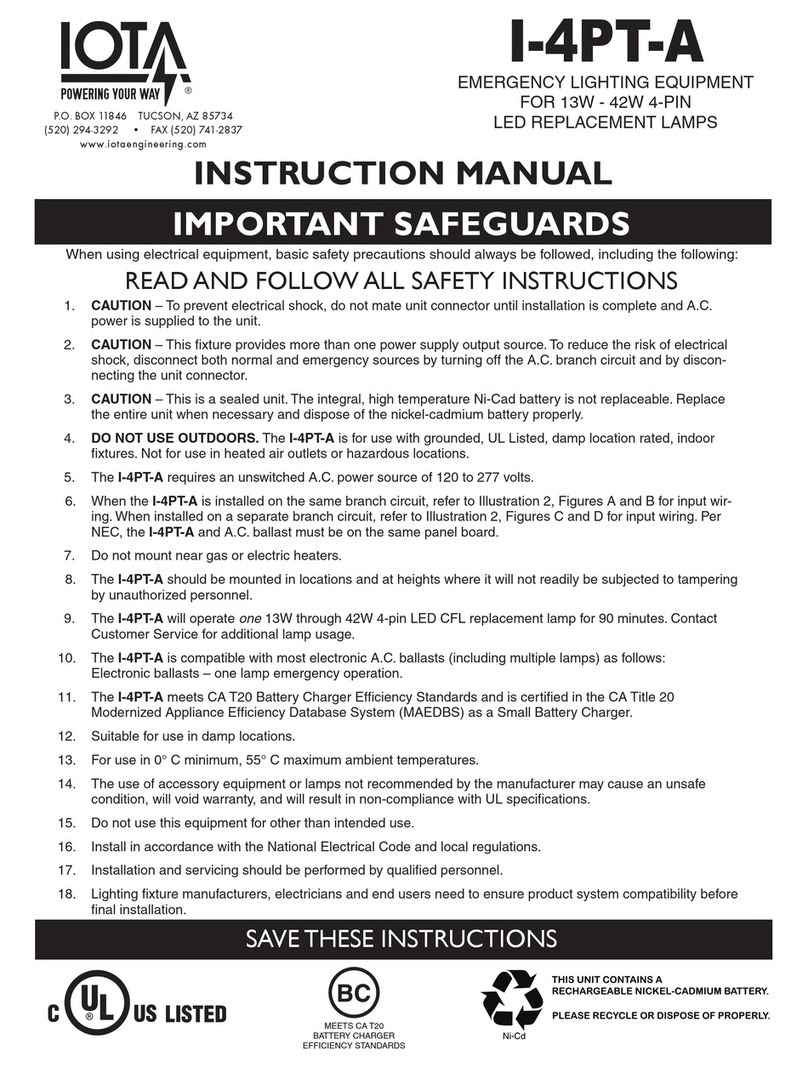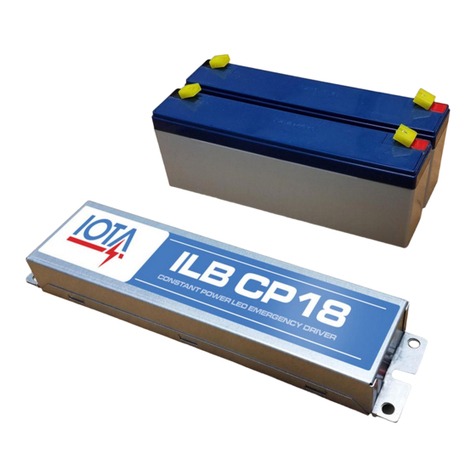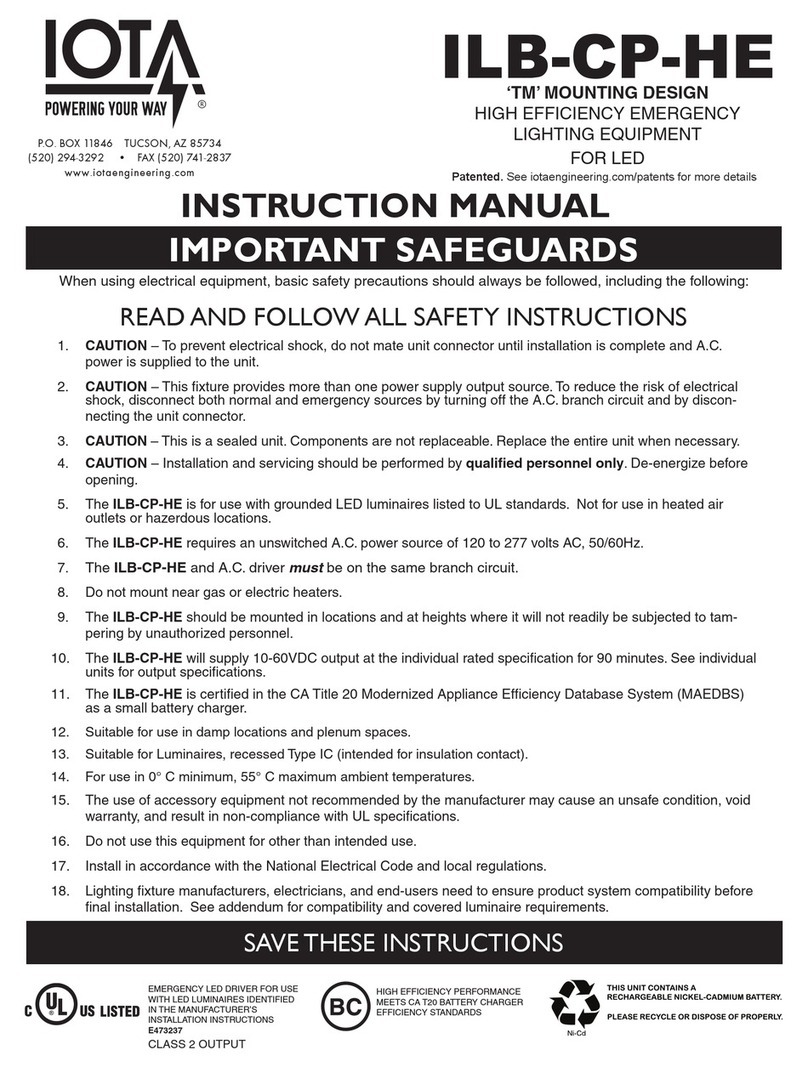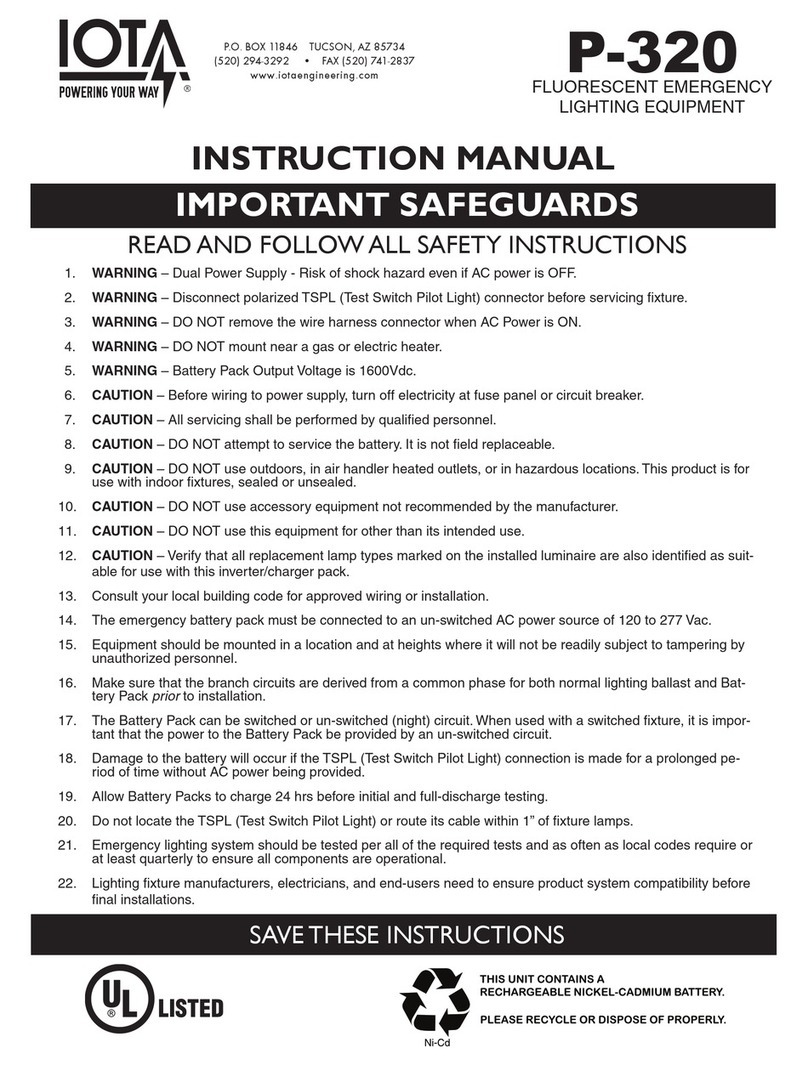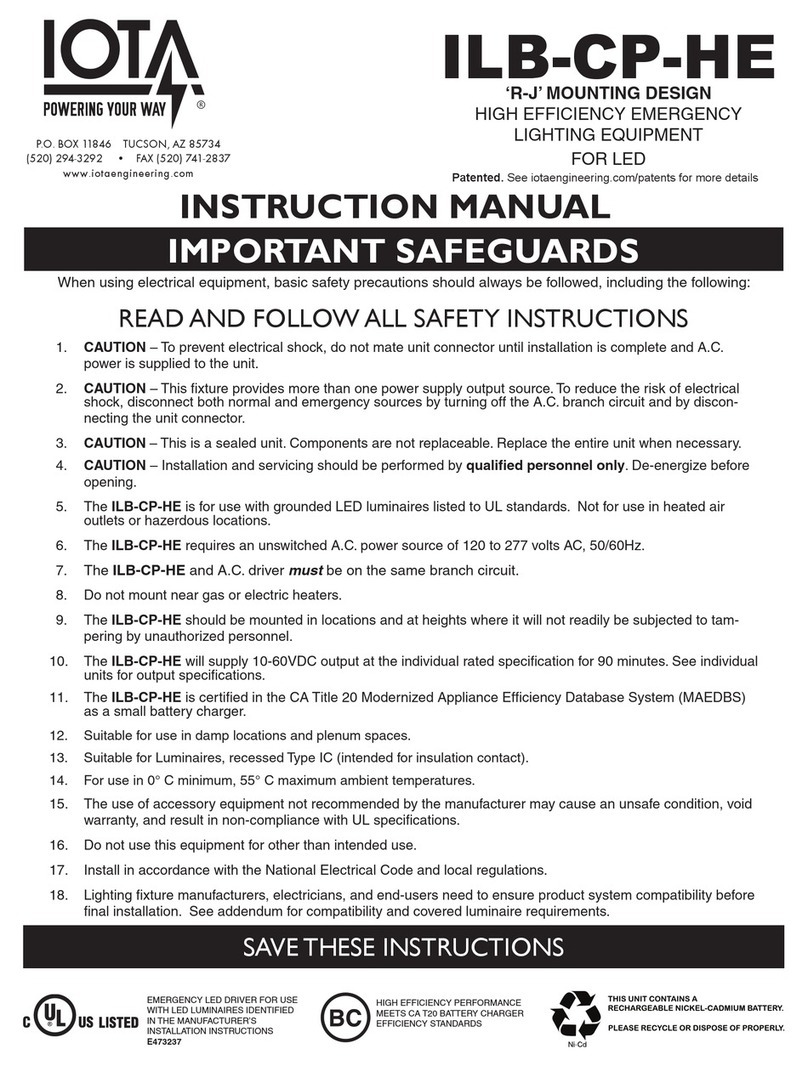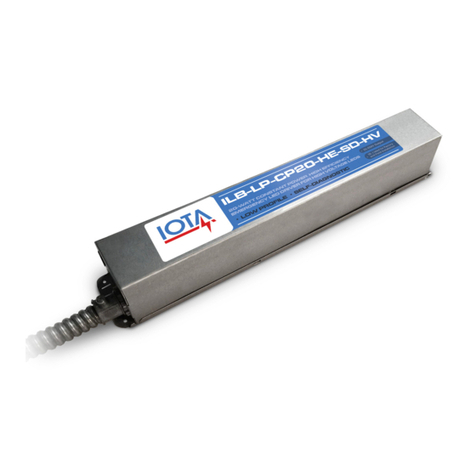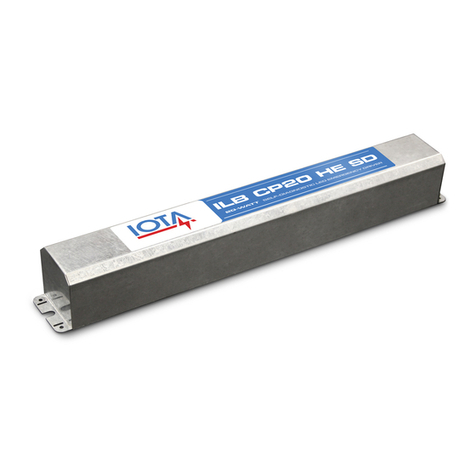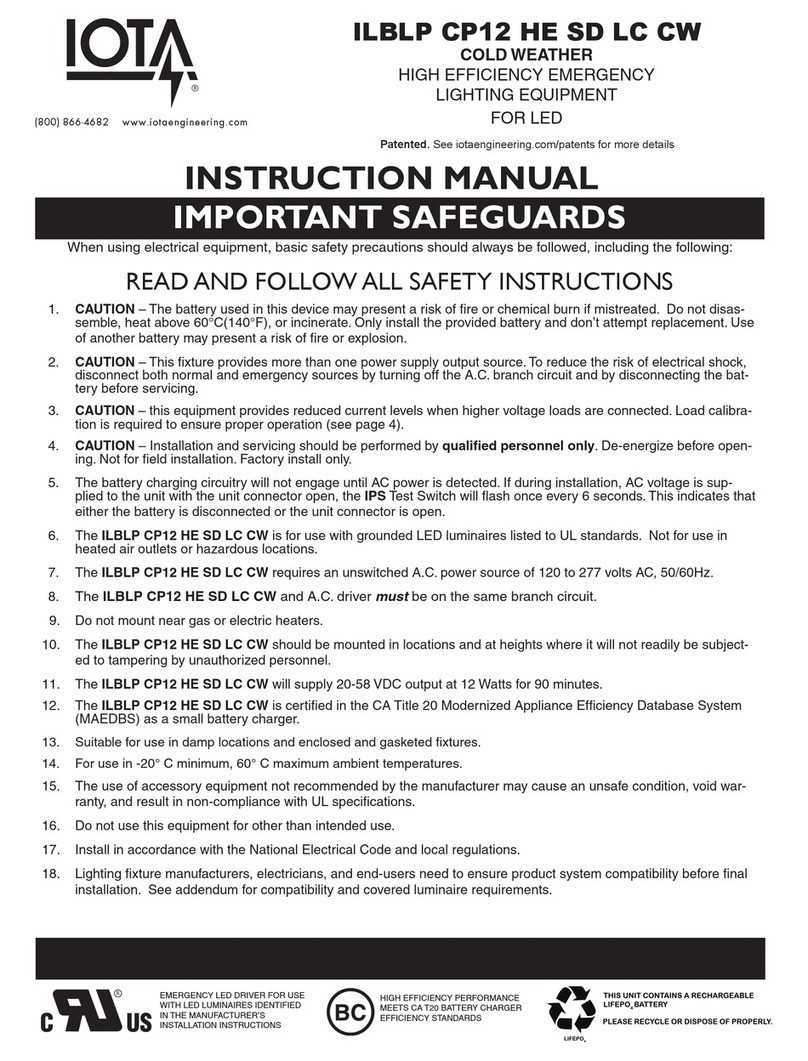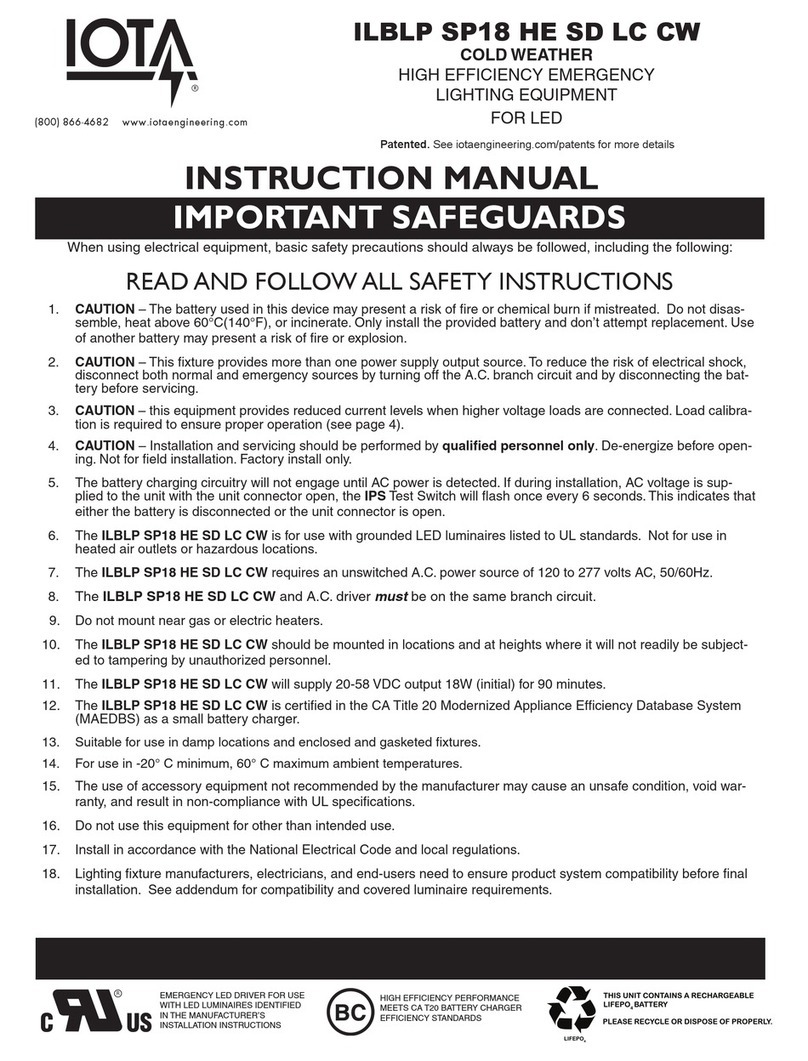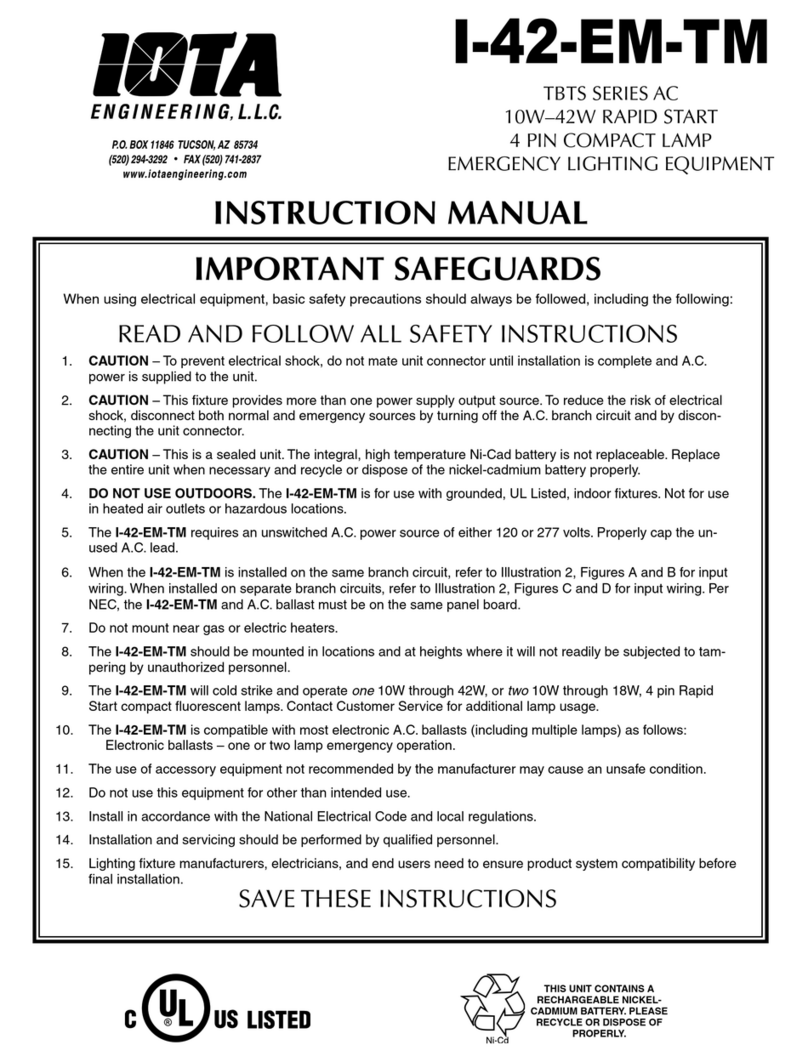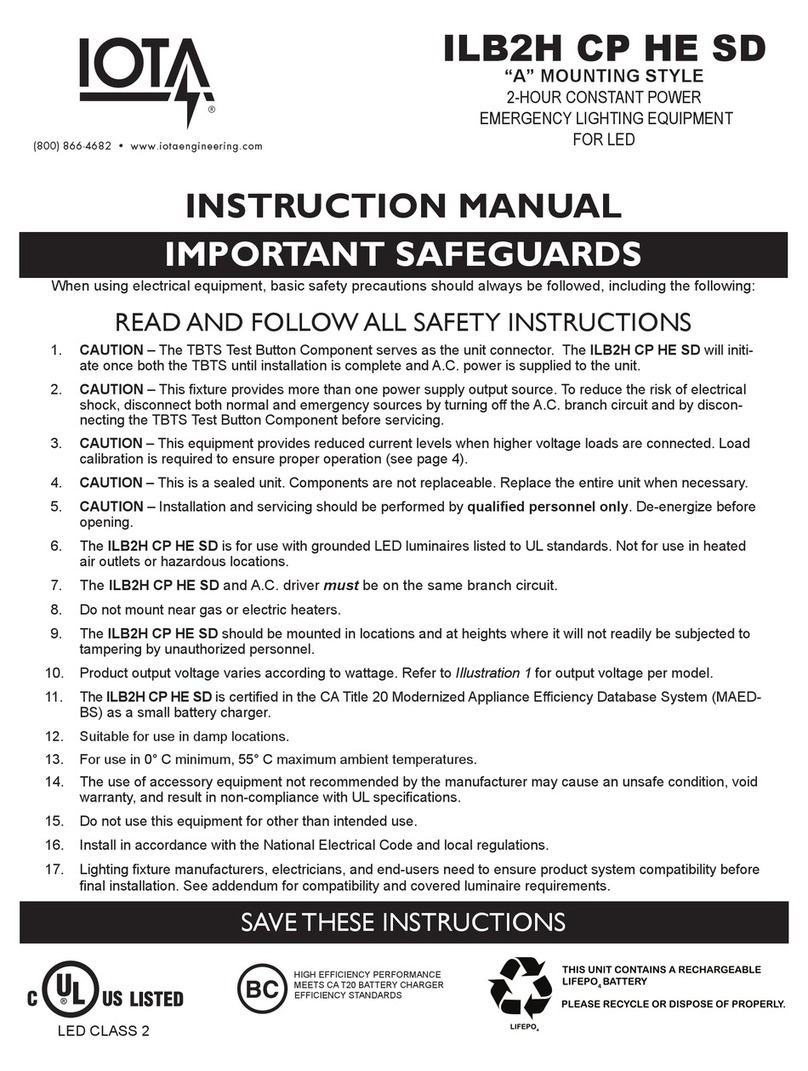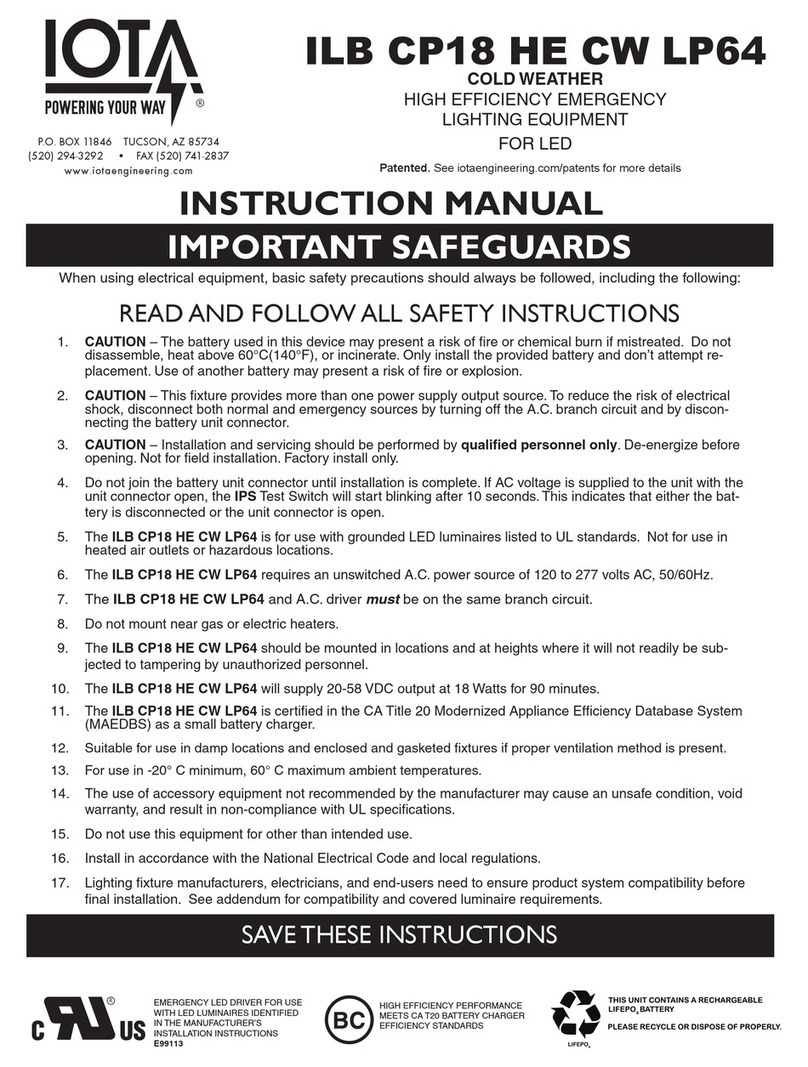
Page 3
ILB-LP INPUT WIRING
ilbcp_tspl_input
IOTA ILBLP
EMERGENCY DRIVER
WHITE
NEUTRAL
UNSWITCHED
24/7 POWER
BLACK (120 TO 277V, 50/60HZ)
STEP 4 - WIRING THE AC INPUT
The ILBLP CP HE SD HV requires an unswitched AC input of 120/277 volts. Connect the BLACK wire to the 120/277 Line,
and the WHITE wire to the Neutral. CAUTION: The case be grounded.
COMPLETING INSTALLATION
STEP 5 - APPLY AC POWER
A. Apply continuous AC power to the unit, and allow the unit to charge for at least 1 hour before performing a
functional test.
B. Verify that the TBTS light is on. The lamp will show Red for low battery and Green for sucient battery charge.
C. Press and hold the TBTS button for two seconds. The pilot light will blink. Within ve seconds, the LED Module should be
operating at a reduced light output. The test mode runs for 30 seconds. To exit the test mode earlier, press and hold the
TBTS button for two seconds. If the LED Module in the xture returns to normal operation, the unit is ready for normal and
emergency service. If not, see the Troubleshooting section.
OPERATION
Normal Mode
A.C. power is present. The A.C. Driver operates the LED Module as intended. The ILBLP CP HE SD HV is in the standby
charging mode. The TBTS will be lit providing a visual indication that the battery is being charged.
Emergency Mode
The A.C. power fails. The ILBLP CP HE SD HV senses the A.C. power failure and automatically switches to the Emergency
Mode. The LED Module is illuminated, at reduced output, for a minimum of 90 minutes. When the A.C. power is restored, the
ILBLP CP HE SD HV switches the system back to the Normal Mode and resumes battery charging.
TROUBLESHOOTING
Problem Possible Cause
Emergency LED Module does
not operate when the TSPL
Button is pressed.
TSPL Charging LED
not on
Fixture does not operate in the
Normal Mode
1. Incorrect wiring of the Emergency Driver and/or AC Driver.
2. The LED Module is not compatible with the Emergency Driver.
3. Battery has not charged for at least one hour.
4. TSPL is not inserted properly into the Emergency Driver socket.
5. The wrong test accessory is being used.
1. AC Power is Off
2. TSPL is not inserted properly into the Emergency Driver socket.
3. The wrong test accessory is being used.
1. Battery is not fully charged.
2. The LED Module is not within the Emergency Driver specifications.
3. Battery is at end of life.
1. Incorrect wiring of the Emergency Driver and/or AC Driver.
2. AC power is off to the AC Driver.
Emergency Driver does not
operate lamps in the emergen-
cy mode for at least 90 minutes.
